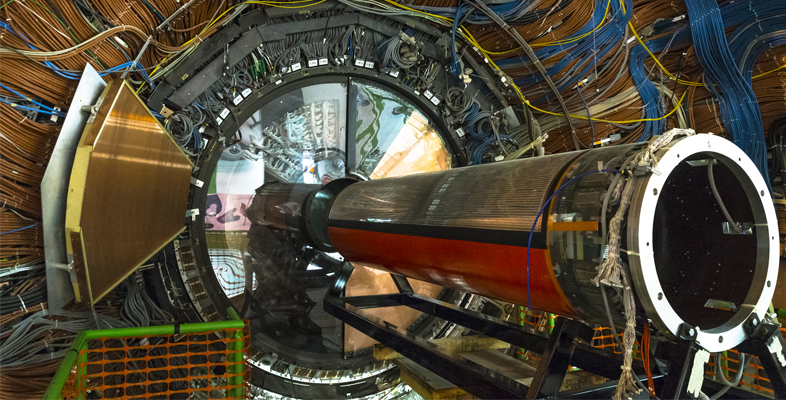8.2 The survival of the neutron
You will now return to the puzzle mentioned at the start of this course. Apart from hydrogen, nuclei made solely of protons cannot exist. Neutrons are necessary to make nuclei stable, so the neutron is vital to the Universe. Without it there would be only a single element, hydrogen, making chemistry extremely dull, as it would be limited to a single molecule, H2, with no one to study it!
The rules of strong interactions allow the construction of a neutron (udd) in the same manner as a proton (uud). Indeed, in the first moments of the Universe it is believed that protons and neutrons were created in equal numbers. Nowadays, however, the Universe as a whole contains only about one neutron for every seven protons, and the vast majority of those neutrons are locked up inside helium nuclei. Clearly then, at some stage, neutrons have ‘disappeared’ from the Universe. How has this happened?
The mass energy of a free neutron is about 1.3 MeV larger than that of a free proton. This energy difference exceeds the mass energy of an electron (which is about 0.5 MeV) and means that free neutrons (i.e. neutrons not bound within atomic nuclei) can undergo beta-minus decay, with a half-life of about 10 minutes.
This is believed to be the mechanism by which the proportion of neutrons in the Universe decreased from one in every two hadrons soon after the Big Bang, to only around one in seven today. Once neutrons are incorporated into helium nuclei they are immune from beta-minus decay, as helium nuclei are stable.
Yet there is still a puzzle: if free neutrons can decay into protons, how did the neutrons form helium nuclei in time to avoid the fate of decay that affected them when they were free? The answer is, like much in life, that it was a question of timing. The temperature of the Universe had fallen to a value that allowed the formation of helium nuclei only a few minutes after the Big Bang. Because free neutrons survive for about 10 minutes before decaying, there were still plenty of them around at this time, and all those that had not yet decayed into protons were rapidly bound up into helium nuclei.
But if free neutrons only survived for, say, one second, there would not have been many neutrons left to form nuclei a few minutes after the Big Bang. The vast majority of them would have long since decayed into protons.
The relatively long lifetime of a free neutron is due to the fact that weak interactions (such as beta-minus decay) truly are weak, and therefore occur only rarely at low energies.
So there is a vital condition for life in the Universe: weak interactions must be truly weak at low energies. If they were as strong as electromagnetic interactions at low energies, beta-minus decay processes would happen much more readily and the lifetime of a free neutron would be much shorter. As a result, the vast majority of the neutrons in the Universe would have decayed before it became possible for them to find safe havens in atomic nuclei, and there would have been no elements other than hydrogen in the Universe.
The reason weak interactions are so weak results from the large masses of the W and Z bosons, which are each around 100 GeV/c2. In order for any weak interaction to occur, a W or Z boson must be created, but it is difficult to produce the massive W and Z bosons when the available energy is much less than this.
Your entire existence therefore relies on the large mass of the W boson! And yet it’s a particle that many people have not even heard of…
